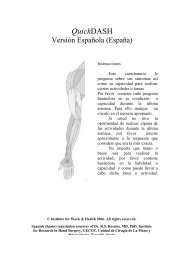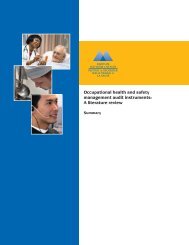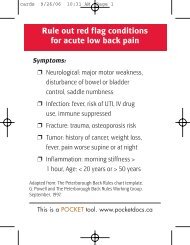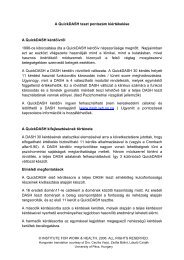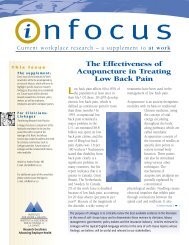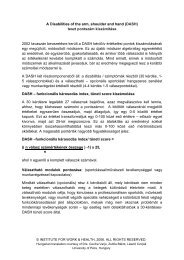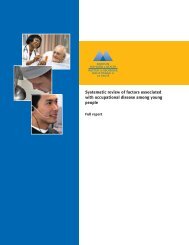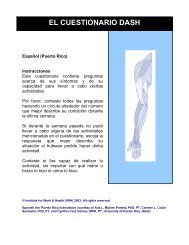A systematic review of injury/illness prevention and loss control ...
A systematic review of injury/illness prevention and loss control ...
A systematic review of injury/illness prevention and loss control ...
- No tags were found...
Create successful ePaper yourself
Turn your PDF publications into a flip-book with our unique Google optimized e-Paper software.
employers with valuable information concerning which workplace programshave scientific evidence demonstrating effectiveness.The heterogeneity in existing research provides a challenge for researcherswho would like to synthesize the IPC evidence by conducting a <strong>systematic</strong><strong>review</strong>. The <strong>systematic</strong> <strong>review</strong> process provides a structured methodologyfor evaluating, synthesizing <strong>and</strong> discovering gaps in the literature (2; 3; 4; 5).The purpose <strong>of</strong> this <strong>systematic</strong> <strong>review</strong> was to identify studies that evaluatedthe effect <strong>of</strong> IPCs on reducing the frequency <strong>and</strong>/or severity <strong>of</strong> workplaceinjuries. Studies that met our design <strong>and</strong> quality criteria were evaluated indetail, <strong>and</strong> study data were synthesized. The <strong>review</strong> included both primary<strong>and</strong> secondary <strong>prevention</strong> studies. By definition, <strong>loss</strong> <strong>control</strong> programsfocused on secondary <strong>prevention</strong>. Based on our synthesis, we maderecommendations about program effectiveness related to primary <strong>and</strong>secondary <strong>prevention</strong> <strong>of</strong> work-related injuries <strong>and</strong> <strong>illness</strong>es. We alsodiscussed the need for further, high quality workplace intervention studies.1.1 Organization <strong>of</strong> the reportFollowing this introduction, readers will find:• a detailed description <strong>of</strong> the methods we used to search for <strong>and</strong> selectrelevant studies• details about quality assessment, data extraction <strong>and</strong> best evidencesynthesis <strong>of</strong> the methodology <strong>of</strong> quantitative studies• results <strong>of</strong> the <strong>systematic</strong> <strong>review</strong>, including information about thenumber <strong>of</strong> studies found; their methodological quality; the types <strong>of</strong>interventions examined; <strong>and</strong> study characteristics• results <strong>of</strong> our synthesis <strong>of</strong> evidence according to interventioncategories• conclusions about the levels <strong>of</strong> evidence• messages about the current state <strong>of</strong> the peer-<strong>review</strong>ed literature <strong>and</strong>recommendations for future intervention research <strong>and</strong> evaluationA <strong>systematic</strong> <strong>review</strong> <strong>of</strong> <strong>injury</strong>/<strong>illness</strong> <strong>prevention</strong> <strong>and</strong> <strong>loss</strong> <strong>control</strong>programs (IPCs)5



